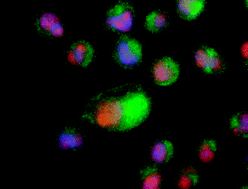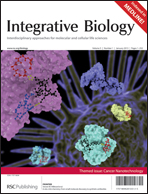Rational design of an immunoconjugate for selective knock-down of leukemia-specific E2A–PBX1 fusion gene expression in human Pre-B leukemia
Abstract
The t(1;19)(q23;p13) is one of the most common chromosomal translocations in acute lymphoblastic leukemia (ALL) and results in production of the transforming oncoprotein E2A–PBX1. Here we first report a novel,

- This article is part of the themed collection: Cancer Nanotechnology

 Please wait while we load your content...
Please wait while we load your content...